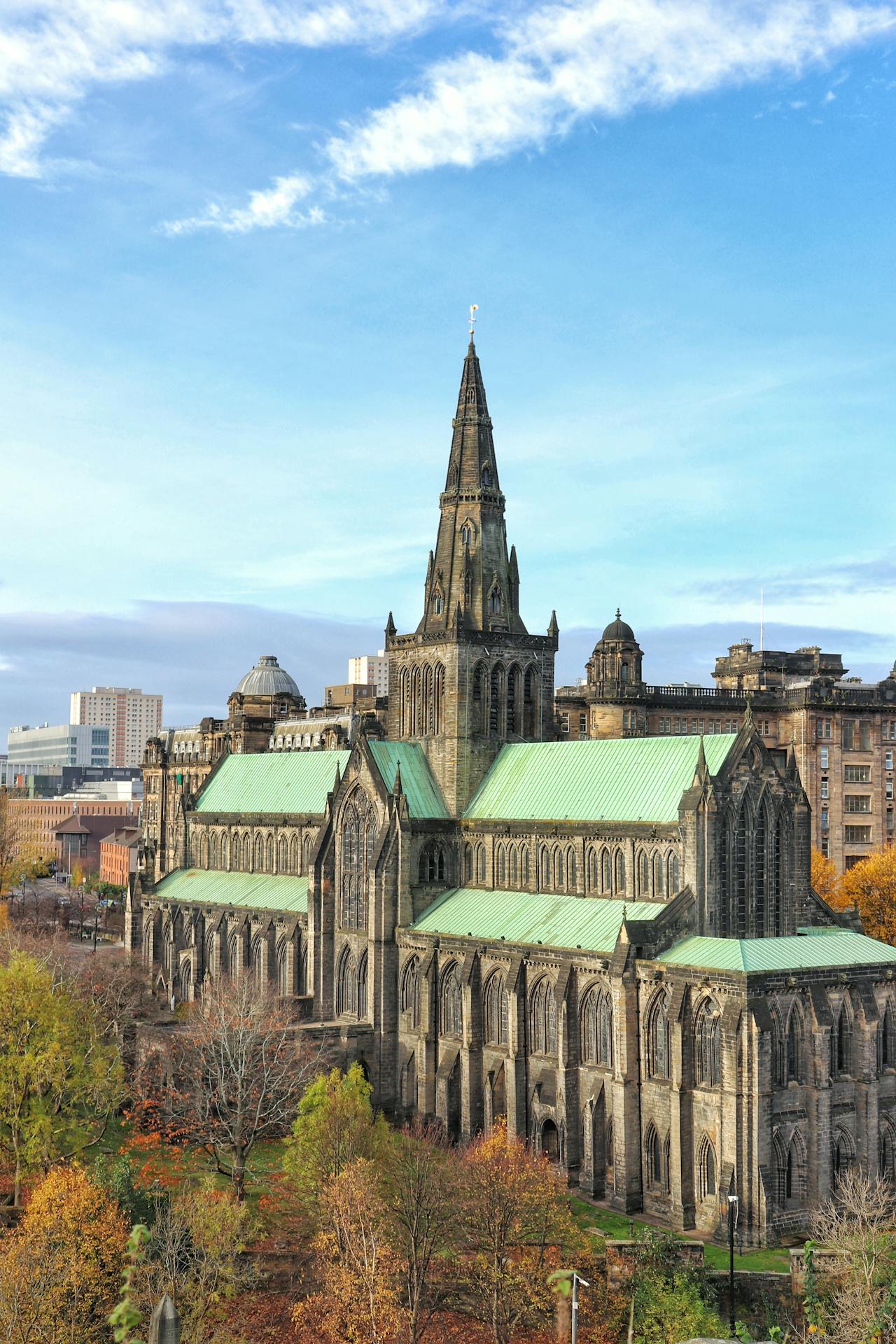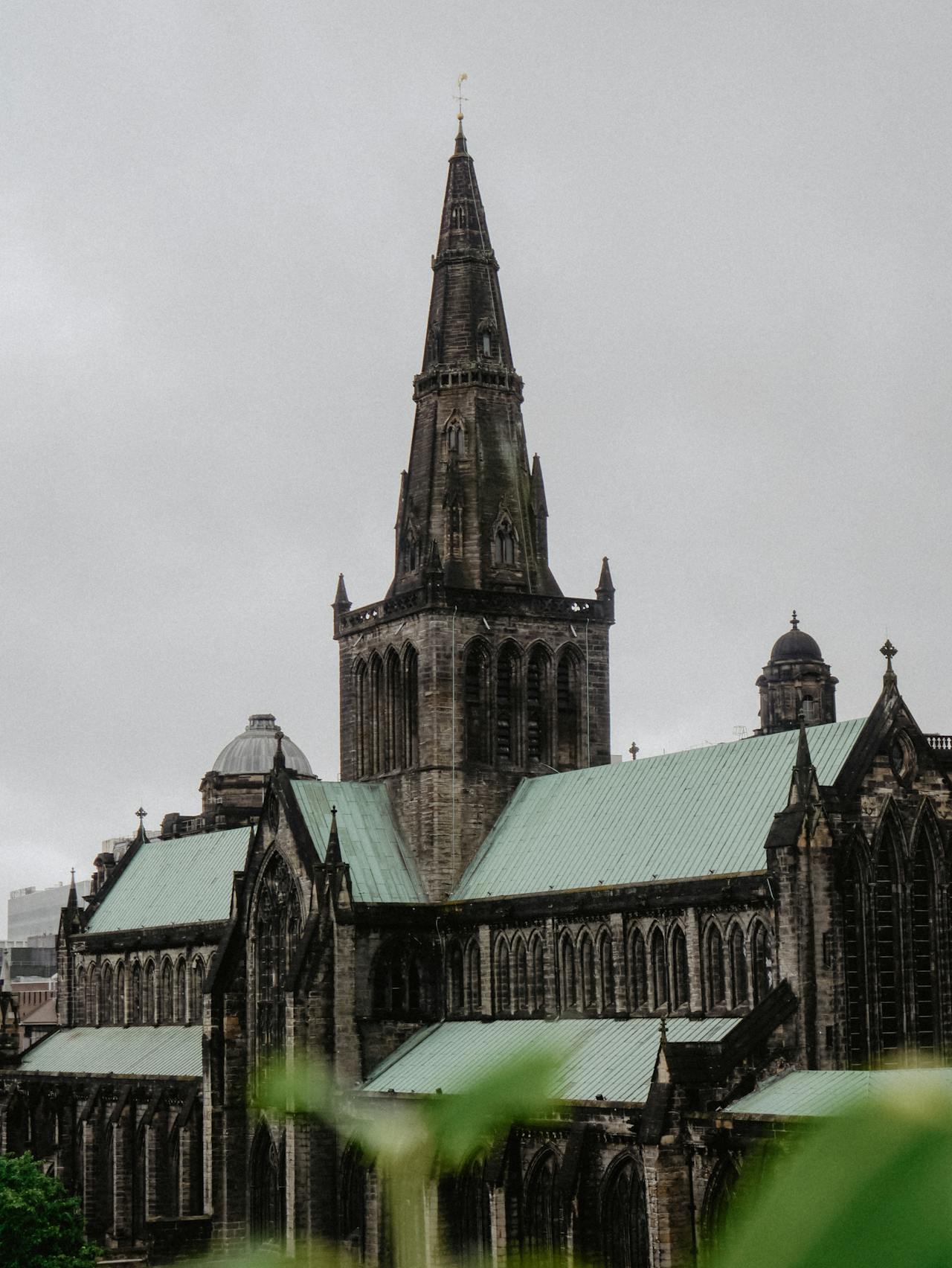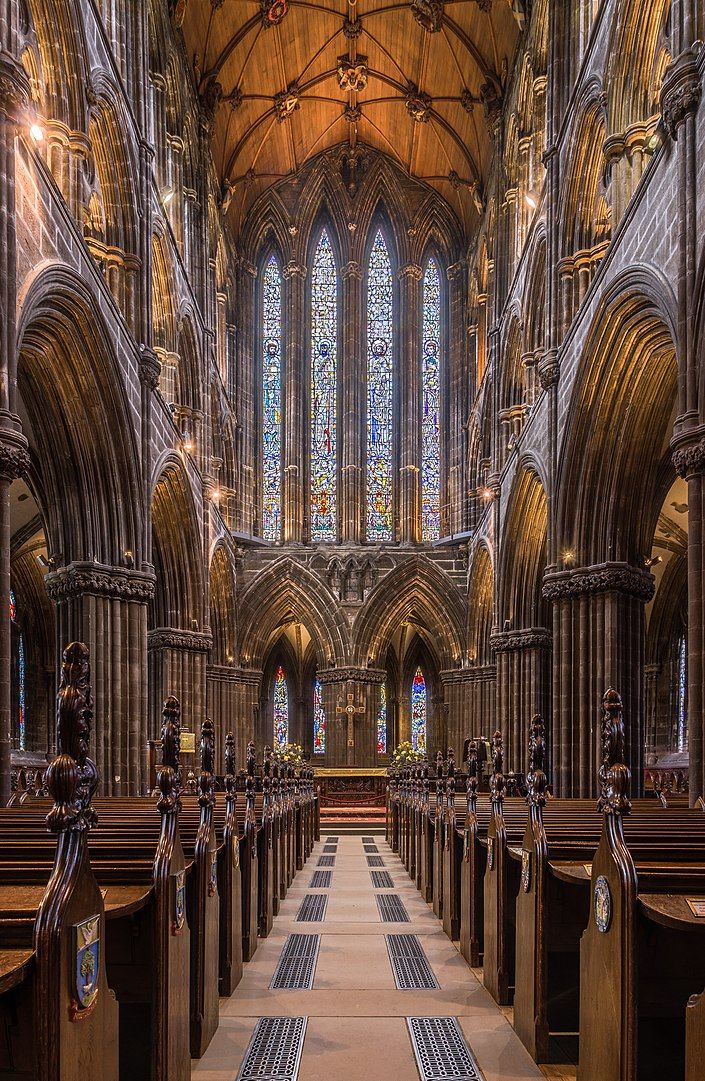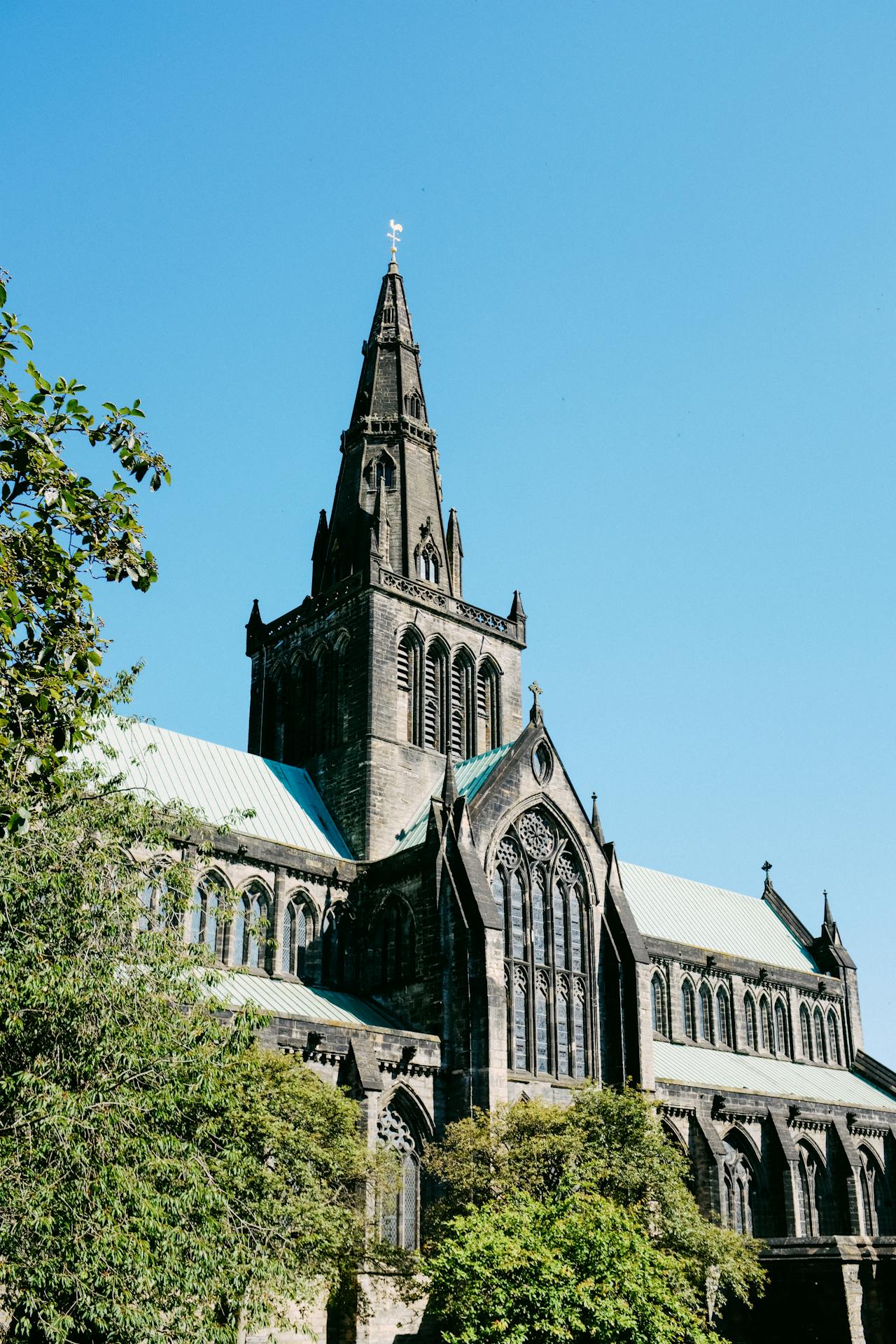Glasgow Cathedral, also known as St. Mungo’s Cathedral, is one of the most unique and important monuments in Scotland. Not only is it the oldest building in the entire city, but it is also the most ancient cathedral in mainland Scotland, and the only one, alongside St. Magnus Cathedral in Kirkwall, in the Orkneys, whose ceilings are originally Medieval. All of this makes Glasgow Cathedral the most representative Gothic building in Scotland, as well as one the most beautiful and interesting landmarks to visit in the entire country!

History of Glasgow Cathedral
The history of Glasgow Cathedral dates back to the first centuries of Christianity in Scotland, when St. Mungo (also called St. Kentigern), patron and founder of the city, carried the first sacred relics in the 500s, building a hermitage and a church where he would be buried upon his passing, in the early 600s.
This early, modest foundation would become an important pilgrimage site throughout the Middle Ages and would give rise, in the 1100s, to the construction of Glasgow’s imposing cathedral right above St. Mungo’s burial place. Even though this first cathedral was consecrated in 1136, it had to be rebuilt and consecrated once again in 1197, after it was ravaged by a harrowing fire.
Glasgow Cathedral grew steadily throughout the following centuries under the oversight of different bishops, who also had to manage the restorations that the building occasionally required. One of them, William Turnbull, would also be the founder of the renowned Glasgow University in 1451, as its first lectures took place in the cathedral’s chapter house.
With the advent of the Protestant Reformation in the 1500s, Glasgow Cathedral was stripped of all its Catholic symbology, as well as its sculptures, altars, and adjoining buildings. Luckily enough, the main venue was adapted and remained operational for the new faith, this being the reason why it has reached present day in an admirable state of preservation, since the new Protestant ministers protected it against vandalism during the earlier years of the Reformation, and also from falling into disrepair as time went by.

Monumental architecture
As we mentioned before, the Gothic architecture of Glasgow Cathedral is among the most beautiful and complex in all landmarks of this kind in Scotland.
Most of the building dates from the 1100s and 1200s, displaying some remarkable Gothic features such as rows of pointed arches, slender tracery windows and three domed corridors surrounding the presbyterium and the choir. The 1400s would witness further additions as stunning as the stone-carved pulpit and the imposing Blackadder corridor (named after the bishop who commissioned it), and, during the 1500s, the installation of delicate Flemish stained glass in the rose window.
Speaking of stained glass, it is also worth mentioning that some of its unique pieces were placed in the cathedral windows as late as the 1950s, including some notable examples such as The Creation or The Evangelists, by Francis Spear, or another one by Sadie McLellan depicting Christ.

Religious and cultural relevance of St. Mungo’s Cathedral
The first genuine remnant of the construction of Glasgow Cathedral in this site lies within the crypt of the Lower Church, where St. Mungo’s grave, patron of the city and noteworthy missionary during the expansion of Christianity in 500s Scotland, can be found. It is a holy place for Christians which has drawn pilgrims since the Middle Ages, and it can still be visited today alongside the rest of the building.
Therefore, St. Mungo’s cathedral not only encompasses several centuries of city history and Scottish Gothic architecture, but also a feeling of belonging to the Christian community whose spiritual services, Catholic at first, and then Protestant, have been administered since its foundation.

Visiting Glasgow Cathedral
How to get there:
- If you are spending a few days in Glasgow, you may visit its cathedral easily, since it can be reached in just a 15-minute stroll from the city center.
- Should you be in Edinburgh, you just need to board one of the countless trains departing from Waverley Station, joining both cities in just under an hour.
You can even take this chance to get to know the rest of elegant, history-rich Glasgow with one of our free tours!
Schedule: Glasgow Cathedral is open from 09:30 to 17:30 (on Sundays it opens at 13:00) from April to September, and from 10:00 to 16:00 (starting at 13:00 on Sundays) between October and March. You might find that the monument is closed from 12:00 to 13:00 due to staff breaks.
Price:
Admission to the Cathedral is completely free of charge, although donations are welcome. Audio-guides are available for just £2.
Find further information here, at the official website
Fun facts about St. Mungo’s Cathedral
Glasgow Cathedral is home to many secrets and fun facts which are worth mentioning.
- Even though it is a Christian place of worship, violence was rampant in the Middle Ages and there were different moral standards; owing to this, the head of Somerled, Lord of the Isles, half Norse and half Gaelic, who perished in the Battle of Renfrew (1164) attempting to invade Scotland, was kept for a long time within the cathedral as an offering to St. Mungo, to whom the citizens ascribed their victory.
- The Wars of Scottish Independence also brought about some curious facts, such as Edward I of England visiting the Cathedral in 1301 to pay his respects to St. Mungo, or also Robert the Bruce in 1306, seeking the protection of the Bishop of Glasgow, his friend Robert Wishart, after he murdered John Comyn, who contested his claim to the throne of Scotland.
- Leaving trivia aside, Glasgow Cathedral might also strike visitors as familiar due to its plentiful appearances in cinema, since it was used as a filming location for movies such as The Batman (2022) or Outlaw King (2018), as well as series as popular as Outlander.

Frequently Asked Questions (FAQs)
Is Glasgow Cathedral an actual cathedral? Even though it has not served as the seat of a bishop since 1690, it is still referred to as a cathedral due to its historical and architectural importance.
What makes Glasgow Cathedral unique compared to other Scottish cathedrals? It is the only Medieval cathedral in mainland Scotland to survive Scottish Reformation almost unscathed, which makes it a living testament of the country’s history.
Which are its most remarkable architectural features? The cathedral is renowned for its spire, an addition from the 1800s, as well as its stained glass and the fact that it has been a coveted filming location for several Hollywood films.
When is the best time to visit Glasgow Cathedral? The Cathedral is open to the public all year round, with specific opening times from April to September, and October to March.
Is there an admission fee? Admission to the cathedral is free of charge, which makes it accessible to all visitors.